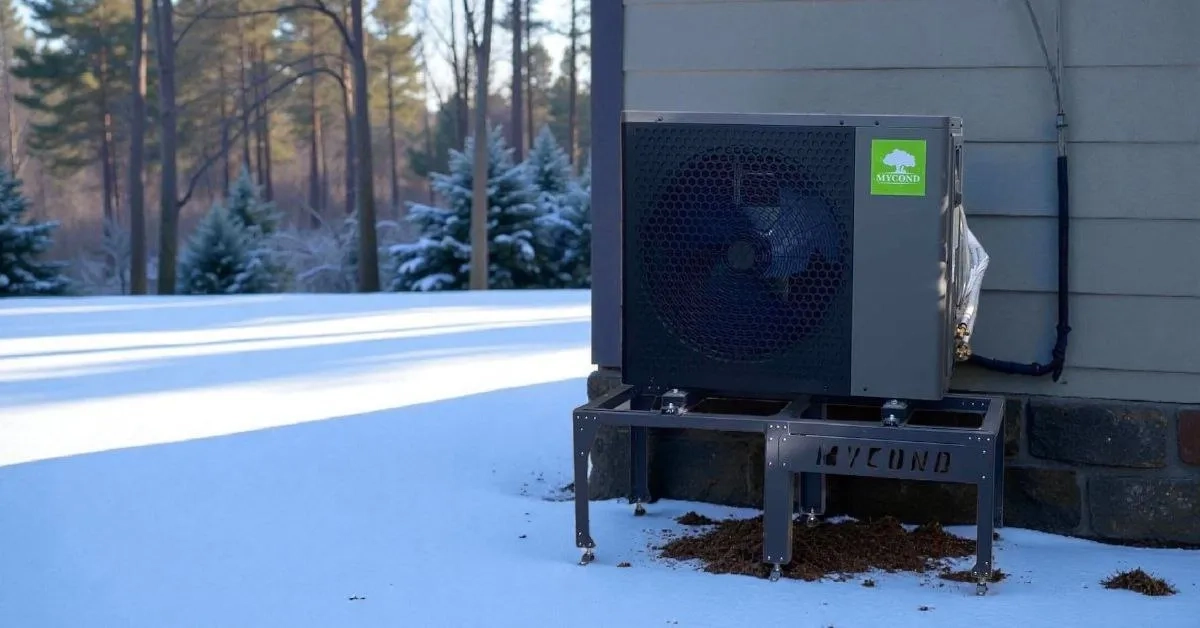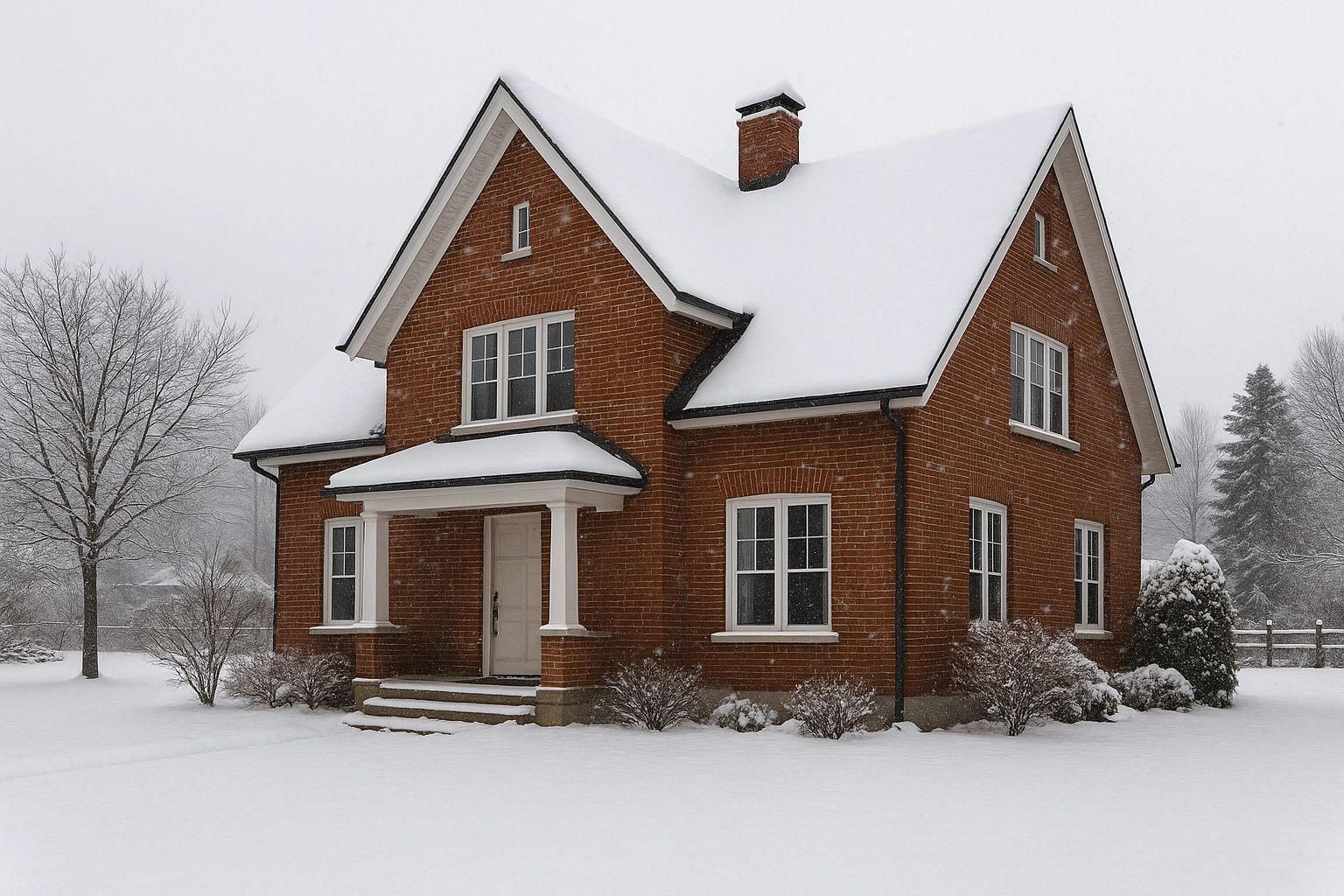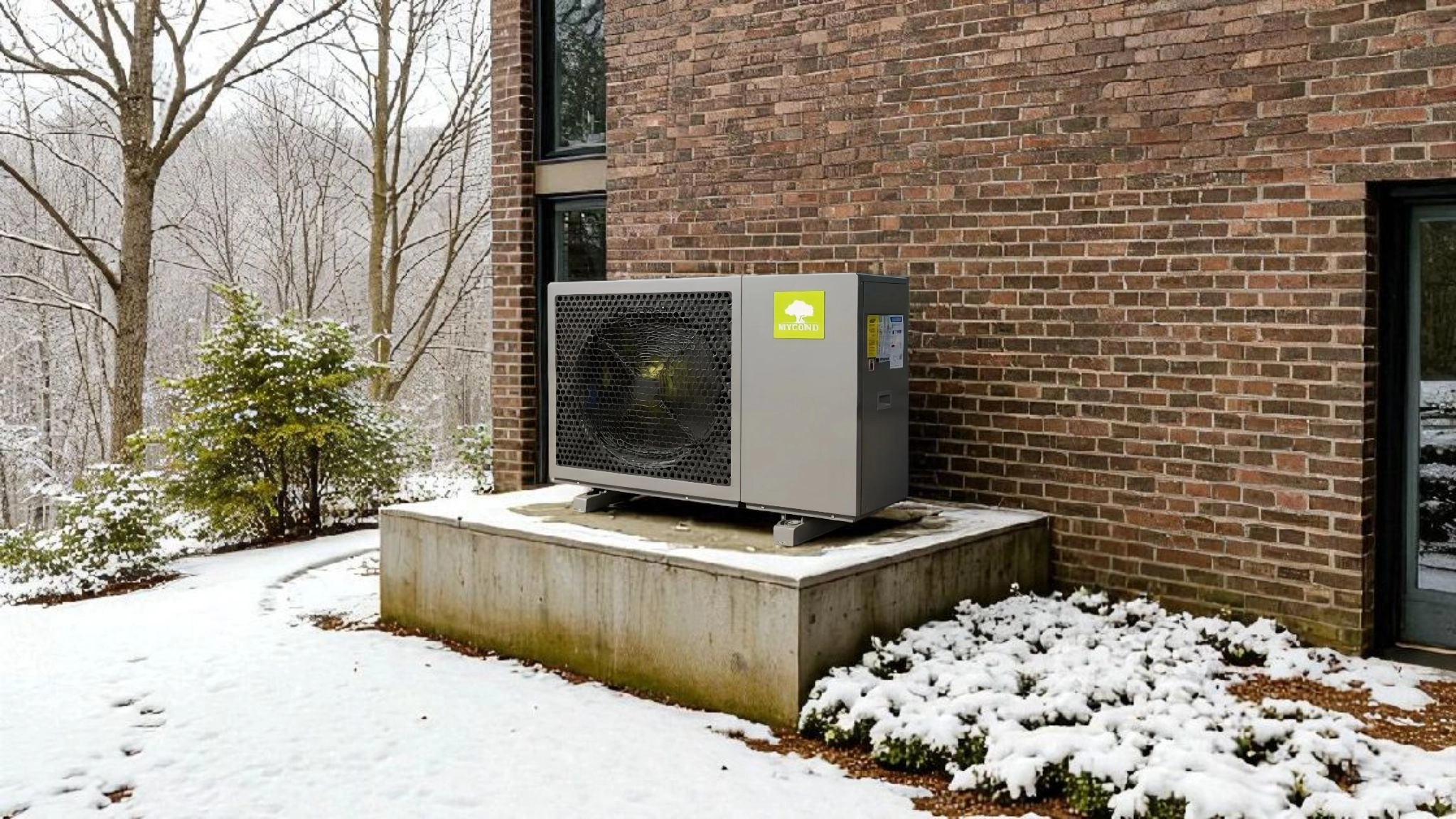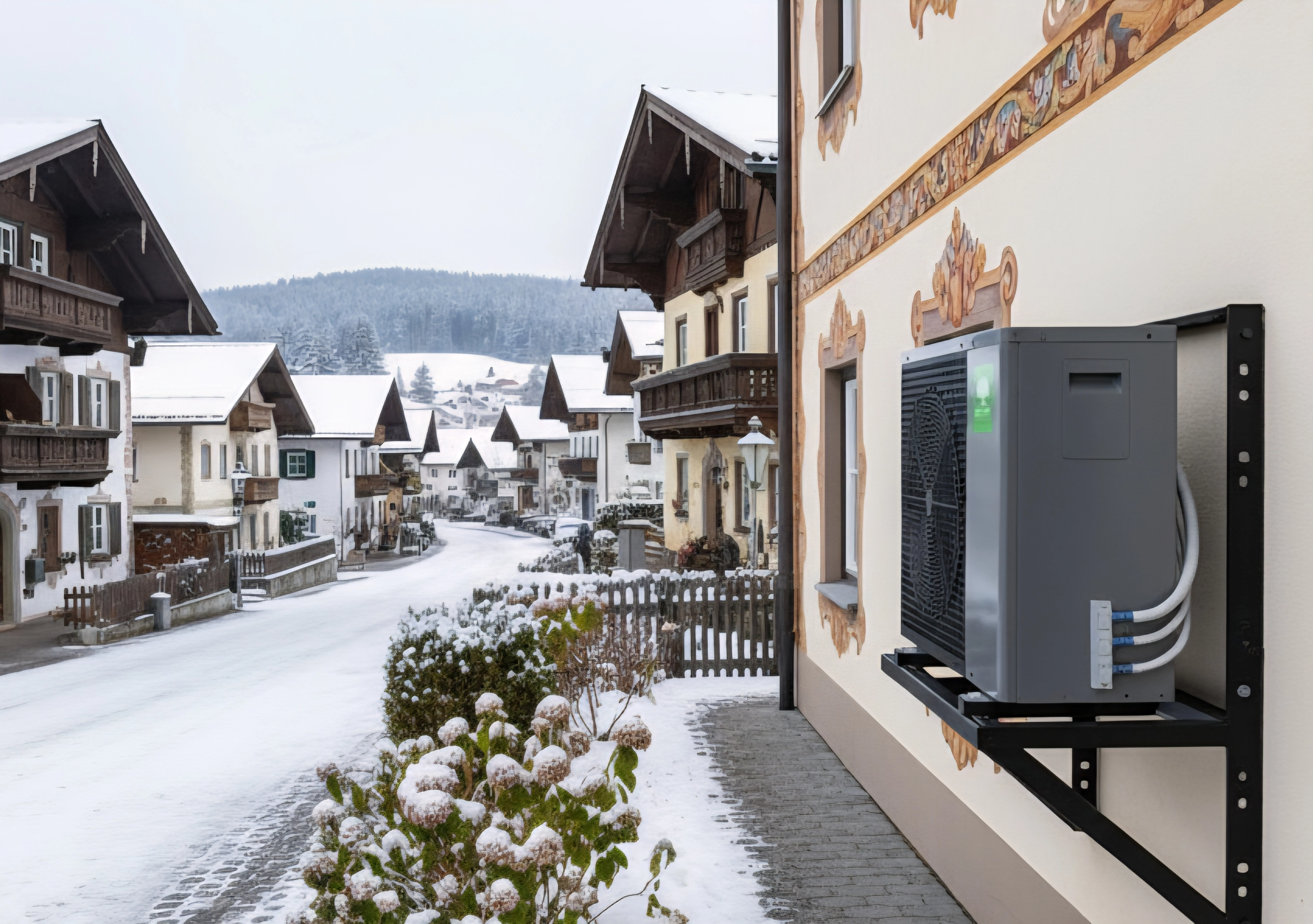
The popular myth that a 150 m² home requires a fixed, standard heat pump capacity needs debunking. In reality, two homes of the same floor area can require completely different heating capacities – from 5 to 15 kilowatts. This depends on a whole set of factors, not just square metres. The BeeHeat heat pump range offers optimal solutions for UK homes with varying insulation levels, delivering efficient heating even at low outdoor temperatures.

Factors influencing heat pump capacity selection
A correct capacity calculation for a 150 m² home depends on three key factors:
1. Quality of the home’s insulation
This is the most significant factor determining heat loss:
- 30-50 W/m² – new energy-efficient homes built to Passivhaus and EnEV standards
- 50-70 W/m² – renovated and modernised homes
- 100-150 W/m² – older homes without adequate insulation
2. Type of heating system
Different systems operate with different flow temperatures:
- Underfloor heating – 35°C (highest heat pump efficiency)
- Fan coils – 40-45°C (good efficiency)
- Radiators – 55°C (reduced efficiency)
3. Climate zone and lowest temperature
The minimum temperature in your area determines the required capacity headroom and the bivalent point for the heating system.

How to calculate the required heat pump capacity
For an accurate calculation of a home’s heating demand, use the formula:
Q = S × q × k
where:
- Q – required heating capacity (kW)
- S – floor area (m²)
- q – specific heat loss per square metre (W/m²)
- k – safety factor (typically 1.1-1.2)
Checklist to determine your home’s insulation category
- External wall insulation thickness greater than 10 cm
- Roof/loft insulation of at least 20 cm
- Energy-efficient windows installed (double-glazed units)
- No thermal bridges in the construction
- Modern ventilation system with heat recovery
If your home meets all points, it is energy-efficient. If it meets 3-4 points, it is renovated. If it meets fewer than three points, it is an older, low energy-efficiency home.
Calculation table for a 150 m² home
| House type | Specific heat loss (W/m²) | Total heat loss for 150 m² (kW) |
|---|---|---|
| Energy-efficient | 40 | 6 (150 × 0.04 × 1) |
| Renovated | 60 | 9 (150 × 0.06 × 1) |
| Old, uninsulated | 120 | 18 (150 × 0.12 × 1) |
As we can see, the capacity difference between an energy-efficient and an old home of the same size can be threefold! That is why heat pump sizing is based on more than just floor area.
Mycond BeeHeat heat pumps: model overview
The BeeHeat series includes models of various capacities, allowing you to choose the optimal solution for any home. All models are equipped with Mitsubishi Electric compressors, use the eco-friendly R32 refrigerant, and achieve energy efficiency class A+++ at a 35°C flow temperature.
An operating temperature range from -25°C to +43°C allows BeeHeat to be used across all UK climate zones. Sound levels (58-68 dB(A)) comply with European comfort standards.
BeeHeat model selection table
| Home demand (kW) | Monovalent setup | Bivalent setup |
|---|---|---|
| 5-7 kW | MHS-N10BH | MHS-N6BH + backup boiler |
| 8-10 kW | MHS-N12BH | MHS-N10BH + backup boiler |
| 12+ kW | MHS-N14BH | MHS-N12BH + backup boiler |

Bivalent point and heating modes
The bivalent point is the outdoor temperature at which the heat pump’s capacity becomes insufficient to fully cover the home’s heat loss. For most regions of the United Kingdom this is between -5°C and -7°C.
Monovalent mode
In monovalent mode, the BeeHeat heat pump is the sole heat source and fully meets the home’s heating needs throughout the year. This mode is ideal for energy-efficient homes and calls for selecting a model with some capacity headroom.
Bivalent mode
A bivalent setup runs the heat pump down to the bivalent point, after which a backup boiler switches in to cover peak loads. This is a cost-effective choice for renovated and older homes, as it reduces upfront investment.
Energy efficiency and savings
The Coefficient of Performance (COP) shows how many kilowatts of heat the pump produces per kilowatt of electricity consumed. A higher COP means greater savings.
COP values for BeeHeat models
| Model | Temperature | COP at W35 | COP at W45 | COP at W55 |
|---|---|---|---|---|
| MHS-N6BH | +7°C | 4.72 | 3.86 | 3.24 |
| 0°C | 3.96 | 3.34 | 2.86 | |
| -7°C | 3.03 | 2.62 | 2.24 | |
| MHS-N10BH | +7°C | 4.88 | 3.92 | 3.32 |
| 0°C | 4.04 | 3.42 | 2.92 | |
| -7°C | 3.12 | 2.70 | 2.30 | |
| MHS-N12BH | +7°C | 4.94 | 3.98 | 3.38 |
| 0°C | 4.08 | 3.48 | 2.98 | |
| -7°C | 3.18 | 2.76 | 2.36 | |
| MHS-N14BH | +7°C | 4.96 | 4.02 | 3.42 |
| 0°C | 4.12 | 3.54 | 3.02 | |
| -7°C | 3.22 | 2.82 | 2.42 |
Average electricity consumption of BeeHeat heat pumps for a 150 m² home is:
- Energy-efficient home: 3,000-3,500 kWh per heating season
- Renovated home: 3,500-4,000 kWh per heating season
- Older home: 4,000-4,500 kWh per heating season
Technical integration of BeeHeat heat pumps
A correct hydraulic integration scheme is critical to efficient operation.
Buffer tank
Recommended buffer tank capacities for BeeHeat models:
- MHS-N6BH - 80 litres
- MHS-N10BH - 100 litres
- MHS-N12BH - 120-150 litres
- MHS-N14BH - 150-200 litres
The exact buffer tank capacity depends on the connection scheme and the heating system type. The buffer helps avoid frequent compressor on/off cycling, extending the equipment’s service life.
Connection to different heating systems
BeeHeat heat pumps are compatible with all types of heating systems:
- Underfloor heating: the most efficient option, allowing COP up to 4.96
- Fan coils: an efficient solution for rapid room heating
- Radiators: can be used with BeeHeat, but for maximum efficiency low-temperature models are recommended
Weather-compensated control
All BeeHeat models support weather-compensated control, which automatically adjusts the flow temperature to outdoor conditions, providing up to 15% additional electricity savings.
Cascade connection
For homes with a high heat demand, cascade connection of up to 9 BeeHeat heat pumps is possible, enabling flexible capacity scaling and high system reliability.

Answers to frequently asked questions
How does BeeHeat perform at -25°C?
Thanks to Mitsubishi Electric compressors and an optimised refrigeration circuit, BeeHeat heat pumps remain operational even at -25°C. Efficiency does decrease, so for regions with very cold winters a bivalent setup with a backup boiler is recommended.
Is a backup boiler necessary?
It depends on home type and climate zone. For energy-efficient homes in most parts of the United Kingdom, a backup boiler is not required. For renovated and older homes a bivalent setup is recommended, especially in northern regions.
What is the compatibility with different heating systems?
BeeHeat is compatible with all modern heating systems. Maximum efficiency is achieved with low-temperature systems (underfloor heating, fan coils), but operation with traditional radiators is also possible.
What buffer tank size is needed?
The buffer tank capacity depends on the heat pump model: from 80 litres for the MHS-N6BH to 200 litres for the MHS-N14BH. The exact size is determined by the heating system type and the connection scheme.
How often is maintenance required?
An annual check before the heating season is recommended to ensure optimal efficiency. Thanks to high-quality components (Alfa Laval heat exchanger, Shimge Pump circulation pump), BeeHeat requires minimal maintenance.
Choose BeeHeat for energy-efficient heating
Mycond BeeHeat is a comprehensive, energy-efficient solution for managing your home’s indoor climate. We offer modern technologies without overpaying for a global brand.
For homeowners seeking reliable and energy-efficient equipment without unnecessary expense, BeeHeat heat pumps are the optimal choice. The wide model range lets you select the ideal solution for any floor area and insulation level.
Contact us by phone or via the form at the bottom of the page for detailed advice on selecting the optimal heat pump model for your home.